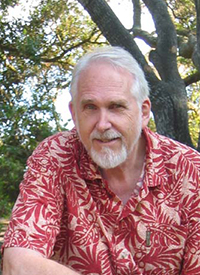 |
Paul Bockhorst is a writer, producer, and director of documentary films. He is the recipient of numerous professional awards, including several Emmy Awards. In recent years, Paul Bockhorst has focused on subjects pertaining to the arts and the natural environment. He works regularly with museum curators and academics and is actively engaged in the interpretation of specialized subject matter. In his projects he strives to make the arts accessible and meaningful to the general public. He works regularly with artists, architects, art historians, museum personnel, and a variety of cultural organizations on programs that interpret the arts, often in a historical context. Paul Bockhorst Productions has produced several documentaries on subjects related to art and architecture. His latest production is Pursuing Beauty: The Architecture of Bernard Maybeck (2012). Documentaries produced by Paul Bockhorst Productions have been shown at the Metropolitan Museum of Art in New York City; the Museum of Fine Arts, Boston; the Huntington Library and Art Collections, San Marino; the Berkeley Art Museum; the Los Angeles County Museum of Art; and the San Diego Museum of History, among others. |
 |
Robert M. Craig is author of Bernard Maybeck at Principia College: The Art and Craft of Building (Gibbs Smith, 2004), which won both the Southeast Chapter, Society of Architectural Historians (SESAH) and Southeastern College Art Conference (SECAC) book awards. He has authored or co-authored four other books and contributed essays to other books on architecture. He has also presented over 140 academic papers at scholarly conferences. Craig served as secretary of the Society of Architectural Historians (SAH), president of the Nineteenth-Century Studies Association (NCSA), and president of the Southeastern American Society for Eighteenth Century Studies (SEASECS). He was a founding member, past president, and longtime treasurer of the twelve-state regional SESAH, on whose board of directors he has served for 28 years. He is a member of the Vernacular Architecture Forum (VAF), the Society for Commercial Archaeology (SCA), and a former editor for, and board member of, SECAC. He has also been recognized by the Atlanta Urban Design Commission with an Award of Excellence in Architectural History. In 2005, Craig received the Distinguished Professor Award from the College of Architecture at Georgia Tech, and he received the first and only (to date) SESAH Service Award for lifetime achievement in service to professional academic societies. Robert Craig is a professor emeritus at Georgia Tech. |
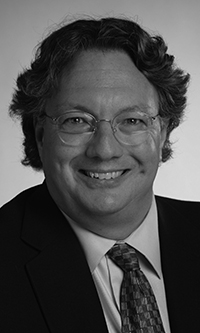 |
John C. Guenther, FAIA, LEED AP, has produced a distinguished body of architecture that contributes significantly to the built environment. His work has received over 50 national, regional, and local awards from the AIA and a diverse array of professional organizations, civic groups, and publications. Guenther’s work has been the subject of many articles in newspapers, magazines, and books. In 2010, he was elected to the College of Fellows of The American Institute of Architects for notable contributions to the advancement of the profession of architecture in design. Guenther was a design principal and partner with Mackey Mitchell Architects, having been with the firm from 1979 to 2009. He currently practices independently as a design consultant. On the Principia College campus, Guenther designed the Science Center and Wanamaker Hall (1996-1998), which were added onto the Watson Building (1934–1935). More recently, in association with Powers Bowersox Associates, he has prepared a Campus Master Plan for the College along with designs for a Core Academic Building with a School of Government and School of Nations classroom wing attached. The proposed building group forms and re-envisions the academic core of the campus, a campus originally designed by Bernard Maybeck from 1923 to 1940. The new master plan and building proposals are in keeping with Maybeck’s original planning principles, while meeting the needs of students, faculty, staff, administrators, and alumni today and well into the future. |
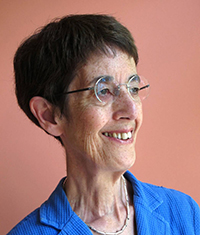 |
Diane Haigh, MA DipArch RIBA, is an architect with a wide range of practice experience. She is also the Principia College Annenberg Scholar for 2012–13. Haigh is currently a Fellow of Trinity Hall, Cambridge, and an associate of Cambridge Architectural Research. She is also a director of Allies and Morrison Architects in London, where she has been involved in major projects, including the refurbishment of the Royal Festival Hall and the new planetarium for The Royal Observatory, Greenwich, along with several university, arts, and housing projects. As part of her practice, Haigh has played a key role in the refurbishment of historic buildings in sensitive settings. Following her involvement in the refurbishment of several Arts and Crafts houses, Haigh wrote a book, The Smaller Artistic House, on the work of the renowned Arts and Crafts architect M.H. Baillie Scott, and she still lectures widely on this work. From 2007–2011, Haigh was the director of design review and architecture at CABE, the UK Government Commission for Architecture and the Built Environment. She also coordinated special design review panels to advise on the 2012 Olympics projects and its Legacy master plan for schools and major infrastructure projects, including the current Crossrail development in London. |
 |
Alan Hess, architect and historian, is the architecture critic for the San Jose Mercury News. He has written nineteen books on modern architecture and urbanism in the mid-twentieth century. His latest book, Frank Lloyd Wright: Natural Design, Organic Architecture, will be published in October 2012. Hess has written monographs on architects Oscar Niemeyer, Frank Lloyd Wright, and John Lautner, as well as architectural histories of Las Vegas and Palm Springs. Hess’s other books include Googie: Ultramodern Roadside Architecture, Forgotten Modern, and The Ranch House. He is currently researching the architecture of Irvine, California, one of the United States’ largest master-planned communities of the 1960s and 1970s. Hess has been active in the preservation of post-World War II architecture, qualifying several significant buildings for the National Register of Historic Places, including the oldest McDonald’s drive-in restaurant. He has lectured for the Getty Research Institute, the Cooper-Hewitt museum, the Walker Art Center, the University of California, Los Angeles, and other groups. He has also appeared on CBS Sunday Morning, CNN, Good Morning America, BBC-TV’s The Late Show, NPR’s Morning Edition, California Public Radio’s California Reports, and other broadcast media. |
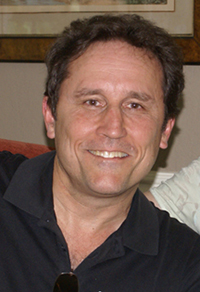 |
William Marquand, AIA, is principal of Marquand Design and the founder/executive director emeritus of the Maybeck Foundation. With the Foundation Board, Marquand conceived, planned, and launched two major, successful historic restoration campaigns. He incorporated the Maybeck Foundation as a 501(c)3, and set up the restoration master plan for Maybeck’s Berkeley, California, church, funded by Getty. For Maybeck’s Palace of Fine Arts, he pioneered a public/private partnership with the City of San Francisco, securing commitments of seven million dollars. Marquand also obtained the cooperation of Supervisor Gavin Newsom, Mayor Willie Brown, and George Lucas. Currently, Marquand provides design, construction, building information modeling (BIM), and expert witness services for residential, forensic, commercial, and religious projects. He is on the Board of Friends of First Church, the non-profit that oversees the restoration and maintenance of Maybeck’s Berkeley church. |
 |
Jane H. Pfeifer served as Principia’s archivist from 1996 to 2010. She was co-editor with Colette Collester of Bernard Maybeck and Principia College: The Historic District by Charles B. Hosmer (1998). Pfeifer supervised the Principia Archives project that cataloged Principia’s collections, including the Maybeck Collection, and provided images for Robert Craig’s book, Bernard Maybeck at Principia College: The Art and Craft of Building. Pfeifer has trained student docents, given tours of Principia’s Maybeck buildings, and is currently involved in Principia College’s Maybeck correspondence transcription project. She attributes her interest in historic preservation to former Principia College professor Dr. Charles B. Hosmer, who was known as the “pied piper” of preservation. Dr. Hosmer was a well-known scholar of the historic preservation movement and wrote The Presence of the Past and Preservation Comes of Age. |
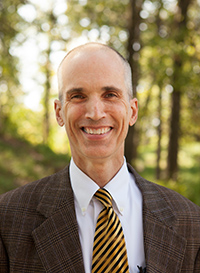 |
Peter Stevens began work at Principia in 1998 and has held a variety of executive positions overseeing everything from facilities to marketing and providing stewardship for strategic planning and master planning projects on both campuses. Along the way Stevens was tasked with organizing studies of Principia’s 23 policies—the foundational policies that guide both the day-to-day work and administrative oversight of Principia’s activities. To gain a deeper understanding of the policies and their origin, he learned (and is learning) as much as possible about the history of Principia. Much to his surprise, he is now often referred to as Principia’s “resident historian.” |
|
|









